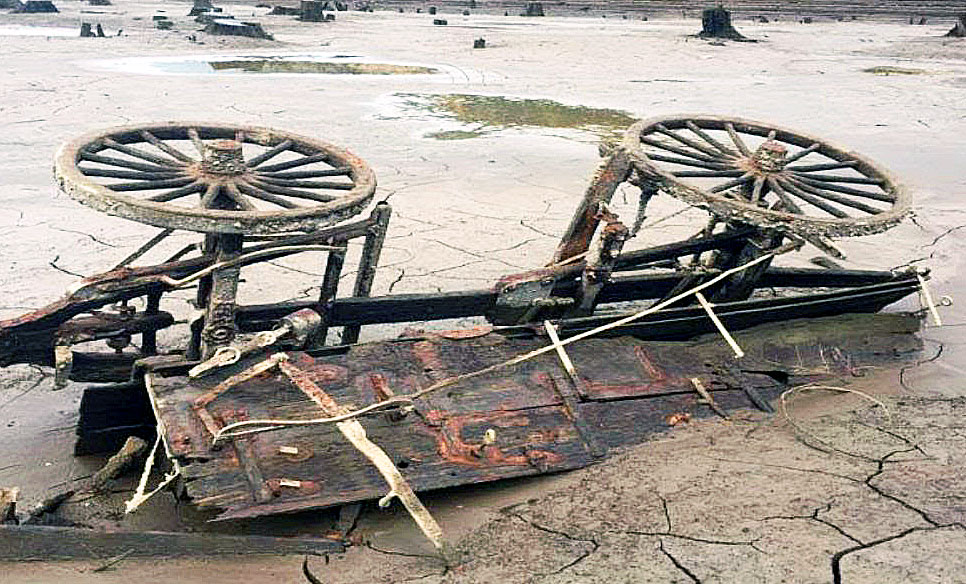
image via – youtube.com
In 1955 the town of Old Detroit was officially abandoned, any and all residents were ordered out by the US government. Soon afterwards water flooded in and all of the buildings and whatever else had been left behind was swallowed up by a new reservoir in Marion County, Oregon. From that point on, the town and surrounding area was called Detroit Lake, which today supplies water to the capital city of Salem and other nearby towns.
When the region experiences low rainfall and a prolonged drought, water levels at the lake inevitably drop. In 2015 the lake had reached a record low of 143 feet below capacity and things that had long ago been buried underwater were once again out in the open. One relic from the past that was spotted was a 19th century utility wagon laying on its side in the muck. A still in-tact cast iron plate on it showed that it was made by the Milburn Wagon Company of Toledo, Ohio and historians have estimated it to be about 130 years old.
It stayed in excellent shape all those years because it’d been buried at the bottom of the lake in a low oxygen environment. It’s brief exposure to air and sunlight probably damaged it more than the 100+ years being underwater did and thankfully its location was kept a secret by those who saw it. In addition to the never before seen wagon, a cement lined octagonal pit was also discovered. However, no one has been able to figure out what it could be or what it was once used for.
The history of the lake and surrounding area is just as interesting as the random things that can be spotted in the mud when water levels drop. Founded in 1880, the town of Old Detroit sprung up as a place originally meant to house the men who were working on the Oregon Pacific Railroad. When the railroad went bust, it became a place where primarily farmers, loggers and their families settled to work the land. At one time there was a school and cafes, a hardware store, movie theater, tavern and church all dotting the streets. Life was good in the quiet picturesque rural community, but there were issues.
The main problem facing the area was that the Santiam River, part of the Willamette River basin, often flooded and was unpredictable. Snowmelt from the Cascades and rainfall led to severe floods that raced down the canyon and valleys destroying everything in their path. After years of expensive floods that wiped out families and farms downstream, Congress finally passed the Flood Control Act of 1938. It provided for dams to be built that would control the flooding and generate electricity. Detroit Dam was one of them and by the time it was finished it measured 1,580 long, 360 feet high, and could hold 455,000 acre-feet of water.
However, before Detroit Dam could be put into operation, the town’s several hundred residents had to be relocated. They’d asked the government for land to re-site the city on but were denied and so they turned to a local timber baron, A.B. Hammond, who was more accommodating. He developed an old logging camp in the area and divided it up into lots which he sold to the displaced residents and other newer arrivals.
Finally in 1955 the dam was operational, and the North Santiam River went from being a swift moving, sometimes raging river, to a huge lake that covered the city of Old Detroit. The town has been sitting at the bottom of the reservoir ever since and rarely makes an appearance. Only when the water levels drop off super low does anything from the past appear and 2015 was the last time that happened.
Watch the video below for the full story:
Please SHARE This With Family and Friends










